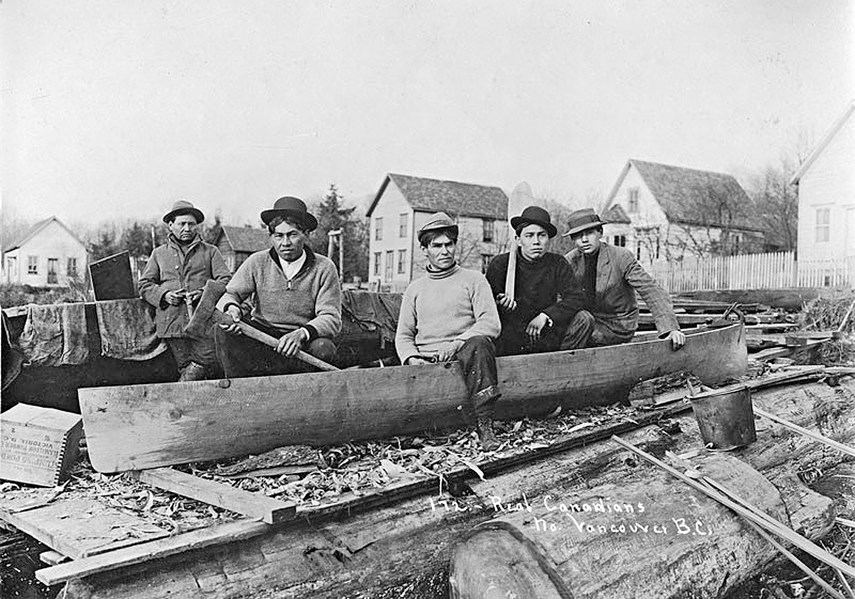This photo shows a group of Skwxwu7mesh (Squamish) men - Dan Kí7ḵes, ‘Old’ Julian, Willie Baker, and Steven Antone - at Eslha7án̓ (Mission Reserve), with a newly made canoe, circa 1912.
These carvers are following the long-standing tradition of canoe making. Western red cedar was the material of choice for the construction of these canoes.
These trees were sacred and the felling of one was a spiritual act. Northwest Coast canoes are usually made by a specialist canoe carver with one or more assistants.
Everyone involved in the construction had to observe specific rules of behaviour.
As their primary source of transportation, canoeing was very important to coastal First Nations. Canoes linked villages, transported goods, and provided access to local resources and hunting grounds.
By the 20th century, systematic repression by the church and government as well as rapid social and technological change saw the canoe culture of the Pacific Northwest virtually disappear.
Today, First Nations canoe culture is kept alive through canoe racing.
For more information about the history of the North Shore and to learn about the new Museum of North Vancouver opening in late-2020, visit nvma.ca and sign up for the museum’s e-newsletter at bit.ly/35MWr83.
Currently, the Archives of North Vancouver at 3203 Institute Rd. in Lynn Valley is open by appointment only. Contact: archives@dnv.org.



